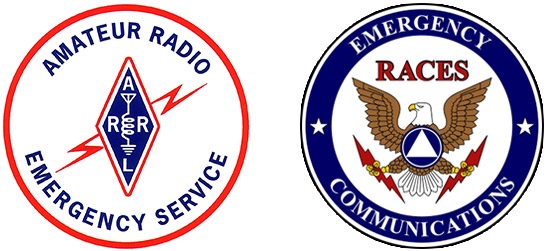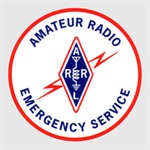Auxiliary Communications Services

The Auxiliary Communication Services (ACS) for the City of Palo Alto supplements emergency communications with volunteer staff. Both licensed and unlicensed volunteers can serve in one or more functions across administrative, management, technical, or operational areas in our program. If you live or work in Palo Alto and are a communications professional, amateur radio operator, or are interested in learning about radio communications, we welcome your involvement.
As volunteers, hams can:
- Supplement communications at their local neighborhood command post.
- Support communications efforts in the City's emergency operations center or our ESV operations center.
- Assist the operations of our logistic trailers located at our fire stations.
- Serve as mobile communications resources or at fixed locations depending on the needs of the city.
Contact us if you would like to join or to learn more about this program - esv@paloalto.gov.
How To Become An Amateur Radio Operator
Operation of an amateur station requires an amateur operator license from the Federal Communications Commission (FCC). Before receiving a license, you must determine your operator class and pass an examination administered by a team of volunteer examiners. US licenses are good for 10 years before renewal and anyone may hold one, except a representative of a foreign government.
In the US, there are three license classes: Technician, General, and Extra. The Technician class license is the entry-level license of choice for most new ham radio operators. The Technician license requires passing one examination totaling 35 questions on radio theory, regulations, and operating practices. The license gives access to all Amateur Radio frequencies above 30 megahertz allowing communication locally and often also within North America. It allows for some limited privileges, too, on the HF (also called "short wave") bands used for international communications.
Learn about hams and how to become a licensed ham operator. You can also get your ham license in one day when you attend a local ham cram.
Join Our Team
To sign up as a Palo Alto Emergency Services Volunteer (ESV) in our Auxiliary Communication Services (ACS):
- Fill out the online ESV application. Choose "ARES/RACES" as your Preferred Primary Team Role or Secondary Role if you are already a registered ESV. Enter your call sign under Amateur Call Sign. The City's Office of Emergency Services (OES) will contact you to validate your registration.
-
Next, sign up with Santa Clara County ARES/RACES. This will give you access to county training, plus signups for city and county events. In your profile, under My Primary Agency, list Palo Alto. You might need wait until you are on the ESV roster and reported to the county.
- We encourage you to join the informal Palo Alto ARES mailing list (Google Group). This will give you a forum to commicuate with other team members.
- Start working on your Type IV Communicator qualification. While not mandatory, this will provide you with the basic skills to assist as an emergency communicator. This is the entry level for the Santa Clara County Mutual Aid Communicator certification system which we encourage for all radio operators.
Practice & Learning Opportunities (Monday Night Nets and Drills/Exercises)
Palo Alto CERT Net
The purpose of this net is to practice communicating within and between neighborhoods in Palo Alto. This net is organized into five districts, D1 through D5. Every Monday night from 7:15 pm to 7:30 pm, the net runs with separate net control operators and frequencies for each CERT district. The CERT district numbers match the Palo Alto Fire Department station numbers. Join the net closest to you. From 7:30 pm to 8:00 pm, there is a single net for Palo Alto on the main tactical frequency. See the below Palo Alto Frequencies chart for all frequencies.
SPECS Net: Southern Peninsula Emergency Communications System
The Palo Alto and North section of the SPECS net meets at 7:30 pm for early check-ins prior to the main net at 8:00 pm, and following the main net for additional check-ins. There is also time for brief training sessions and announcements of special interest to Palo Alto hams. Visitors are always welcome to check in to the nets. Visit SPECS for details.
- The first Monday of the month: use the primary simplex frequency - Command A - provided in the frequency chart below.
- The other Monday's of the month: use the Command B repeater - W6EI.
The main SPECS Net meets by radio every Monday night at 8:00 pm on 145.270 MHz, negative offset, 100 Hz PL tone (W6ASH repeater), to provide a forum for announcements and to collect data from local city nets. The purpose of the net is to train and maintain a crew of Amateur Radio Operators who are ready to furnish communication services in a time of need. This is done by providing announcements pertaining to amateur radio and emergency preparedness.
Palo Alto ESV Drills and Exercises
About quarterly, the City of Palo Alto OES schedules drills and exercises that ham operators can participate in to practice radio communications skills. These can include net control at the neighborhood level or at the operations center, scribe, packet radio operator, or a individual communications resource. Our training schedule is available here and opportunities are also announced in our monthly ESV updates.
PAARA: Palo Alto Amateur Radio Association
PAARA runs a weekly Net and Swap session at 8:30 pm every Monday evening on the N6NFI repeater: 145.230, –0.6 MHz offset, 100Hz PL. Visit www.PAARA.org for details.
Palo Alto Frequencies
Effective 15 August 2022, the following frequency plan is in effect. We have changed a number of our frequencies so please update your radio programming with these changes.
| FREQUENCY |
TITLE |
PRINCIPAL USE |
COMMENTS |
| 147.540 MHz |
Command A |
Primary simplex for tactical and resource nets |
Simplex, PL 100 |
| 443.825 |
Command B |
Primary repeater for tactical and resource nets; W6EI Repeater
|
+5 MHz, PL 151.4 |
| 442.000 |
Command Alternate |
Alternate repeater; WW6HP Repeater |
+5 MHz, PL 151.4 |
| 441.000 MHz |
District 1 |
Local tactical communications |
Simplex, PL 100 |
| 440.200 MHz |
District 2 |
Local tactical communications, N6BDE repeater |
+5 MHz, PL 123 |
| 147.525 MHz |
District 3 |
Local tactical communications |
Simplex, PL 100 |
| 147.480 MHz |
District 4 |
Local tactical communications |
Simplex, PL 100 |
| 446.500 MHz |
District 5 |
Local tactical communications
|
Simplex, PL 100
|
Notes:
- Monday night net is on Command A (simplex) on the first Monday of the month, on Command B (W6EI) on other Mondays.
- D2 - N6BDE is shared with Stanford ARES
- D3 - 147.525 is shared with Milpitas ARES. We have agreed that Palo Alto will transmit PL 100 Hz and Milpitas will transmit PL 84.5 Hz. We will only use tone squelch if we experience interference.
- D5 - Designated for use by Trailer Teams as needed. 446.500 is shared with Sunnyvale ARES. We have agreed that Palo Alto will transmit PL 100 Hz and Sunnyvale will transmit 94.8 H. We will only use tone squelch if we experience interference.
References
NARCC is the Northern Amateur Relay Council of California, the coordinating body for repeaters in our area, narcc.org
County voice frequencies: https://www.scc-ares-races.org/freqs/freqs.html
NARCC band plan for 70 cm: http://www.narcc.org/Rptr_Lists/70cmchart-20070507-1.pdf
NARCC repeaters on 70 cm: http://narcconline.org/narcc/Repeater_List_Menu.cfm?CZONE=All&SBAND=440&SType=All&Status=All
Amateur Radio Emergency Data Network (AREDN)

The City of Palo Alto Office of Emergency Services is enhancing Palo Alto's emergency communication infrastructure by integrating the Amateur Radio Emergency Data Network (AREDN). This network will serve as a vital communication contingency in the event that primary communication systems are disrupted. To participate in the AREDN network, individuals must be licensed HAM radio operators and registered as Palo Alto Emergency Services Volunteers. For further information visit Palo Alto AREDN.
Auxiliary Communications Online Resources: Radio Information and Useful Links
Radio Manuals
Useful Links
What is Amateur Radio Emergency Services (ARES)
ARES is a part of the Amateur Radio Relay League (ARRL). The ARRL deals with all aspects of amateur radio, also known as ham radio, including legislation, licensing, and contests. The ARES branch handles communications during emergencies such as search-and-rescue operations, aiding a ship in distress, providing communications services to a Red Cross shelter, and similar incidents.
ARES volunteers in Palo Alto participate in planned events such as festivals, parades, bike rides, fire watch operations, and more.
What is Radio Amateur Civil Emergency Services (RACES)
RACES is the communications branch of the Federal Emergency Management Agency (FEMA). When a government entity requests amateur radio assistance, the response is processed through RACES and usually involves a disaster or other wide-reaching emergency. RACES operators are covered with the California Disaster Services Workers insurance.
The ARES Emergency Coordinator (EC) for Palo Alto is Mr. Walter Underwood. He can be reached by email at wunder@wunderwood.org.
Related Content



PALO ALTO ESV PALO ALTO CERT PALO ALTO ACS